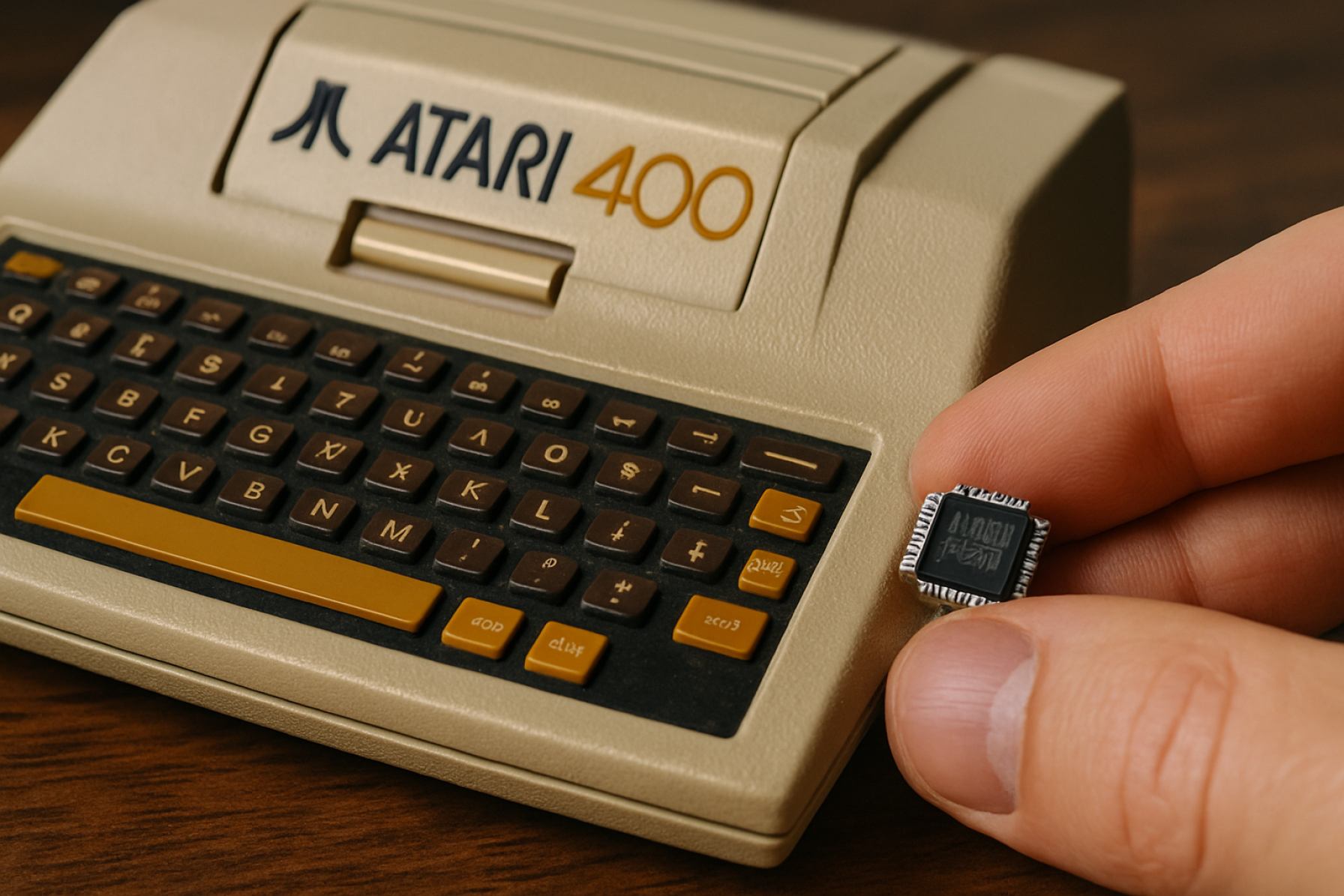From Living Room Legend to Fingertip Marvel: Meet the World’s Smallest Atari Computer
A Polish engineer has compressed the iconic Atari 8-bit computer into a module smaller than a postage stamp—see how retro meets the future in 2025.
- Size: Just 2 × 1.5 cm—tinier than a coin
- Clock Speed: Up to 31 MHz—over 17x the original
- Original Atari 400 Price (1979): $549
- Year of Atarino Reveal: December 2023
The future of retro tech just arrived—and it can fit on your fingertip. In a jaw-dropping engineering feat, Polish hobbyist Piotr “Osa” Ostapowicz has unveiled the Atarino, a postage-stamp-sized marvel that faithfully revives the classic Atari 8-bit computer hardware inside a package smaller than you ever imagined.
Back in 1979, the Atari 400 and 800 launched the home computing revolution, bringing advanced graphics, sound, and the best arcade-style games to living rooms everywhere. These computers were state-of-the-art—big, bold, modular, and expensive. But nearly half a century later, history has taken a thrilling twist.
What Is Atarino and Why Is Everyone Talking About It?
Atarino isn’t just a tribute; it’s a genuine technological leap. Using state-of-the-art FPGA (field-programmable gate array) technology, Ostapowicz rebuilt the original Atari XL/XE computer logic, not merely simulating the experience with software but recreating the vintage hardware on a chip smaller than a thumb.
How small? At just 2×1.5 centimeters (about 0.79×0.59 inches), it’s only a little bigger than a Polish 1 Grosz coin. Yet inside, you’ll find all the old-school magic: a 6502C CPU, classic ANTIC and GTIA graphics chips, the beloved POKEY sound hardware, and memory controllers—all seamlessly integrated.
What Sets Atarino Apart from Classic Atari Systems?
Unlike modern reboots like the Atari 400 Mini or Android-based emulators, Atarino doesn’t just run the software; it thinks like the original. By implementing the hardware’s logic at the chip level, this module maintains near-100% compatibility, including with authentic Atari peripherals.
Pushing boundaries further, Atarino can clock in at an astounding 31 MHz—a huge leap from the original hardware’s tepid 1.79 MHz. It even beefs up memory performance by ditching cycle stealing—a sluggish method where the graphics chip shared RAM with the CPU—opting instead for independent memory channels.
Ostapowicz spent over a decade refining his project, which debuted publicly in late 2023. He’s reimagined the 6502 processor, improving its instructions and boosting the overall system’s power.
Q&A: Why Does a Tiny Atari Matter in 2025?
Q: Why would anyone want such a small Atari system?
A: For retro enthusiasts, developers, and collectors, Atarino is a bridge between nostalgic computing and cutting-edge miniaturization. It invites new ways to experience and preserve digital history—imagine fitting a legendary game console into a smartwatch, wearable, or even a keychain!
Q: Does it run original floppy disks or cartridges?
A: Atarino is designed to stay compatible with classic Atari peripherals, offering authentic connections unlike most emulation-based systems.
Q: Could this tech inspire other retro revivals?
A: Absolutely. As FPGAs shrink and improve, expect even more pocket-sized recreations of iconic systems—potentially from giants like Nintendo or Sega. The future points to powerful, ultracompact “vintage” hardware for learning, game development, and fun.
How to Build or Get Involved with Tiny Retro Computers
If you’re inspired to tinker, FPGA retro computing is the frontier for skilled hobbyists and aspiring engineers. Dive into open-source projects, discuss breakthroughs with communities like Reddit, and watch developments on GitHub. The era of homebrew hardware is only heating up for 2025 and beyond.
Ready to Ride the Retro Tech Wave? Experience classic computing in the palm of your hand. Here’s how to get started:
- Track developments like Atarino in online retro computing forums
- Read up on FPGA basics and open-source hardware projects
- Dig out your favorite oldschool Atari games & learn how they run on modern hardware
- Connect with other enthusiasts and share your projects
The future of the past is now—don’t blink, or you’ll miss this stamp-sized revolution!
